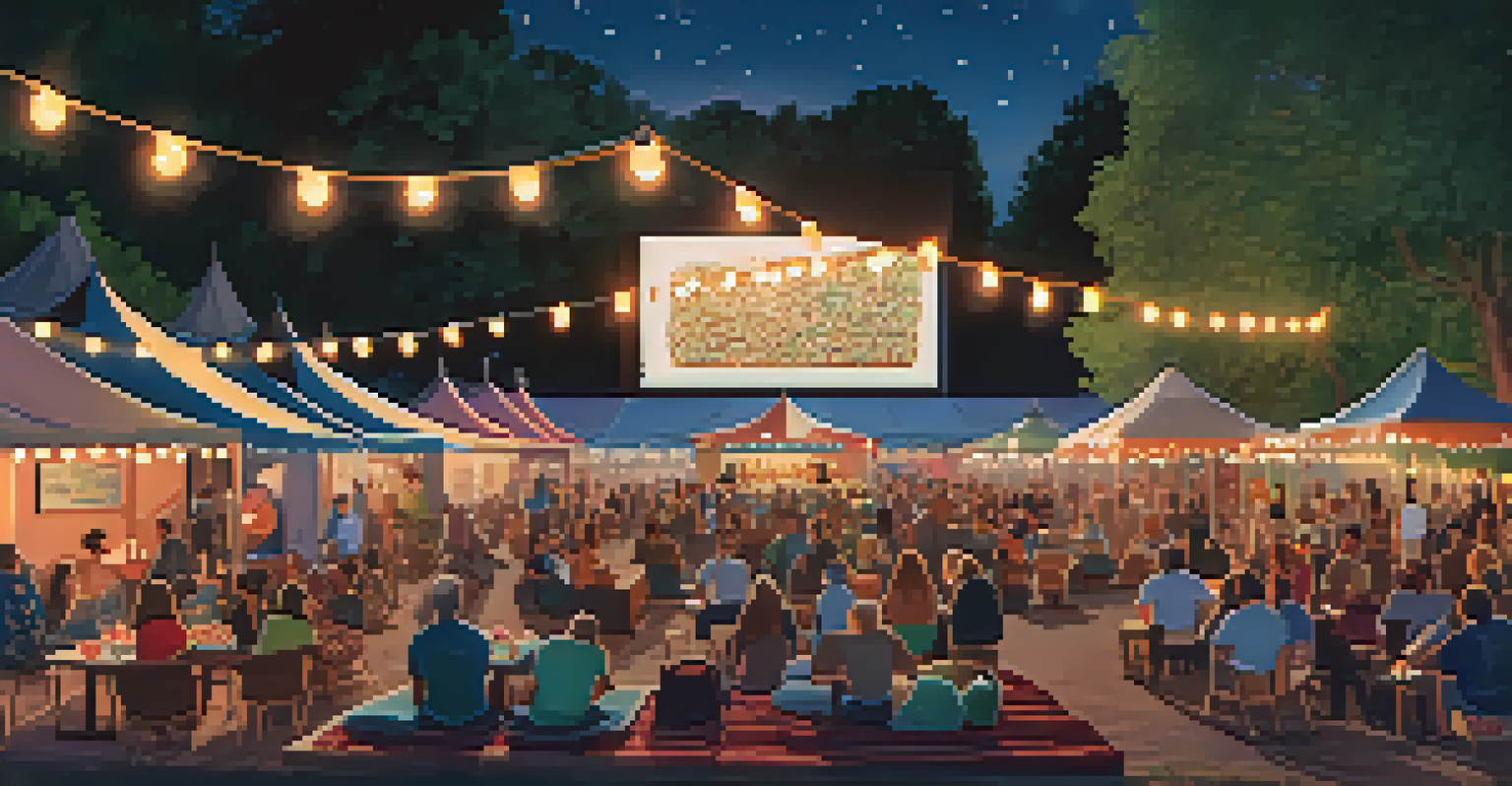The Impact of Audience Expectations on Film Adaptations

Understanding Audience Expectations in Film Adaptations
Audience expectations play a crucial role in the success of film adaptations. When a beloved book or comic is transformed into a movie, fans often come with a mental checklist of what they hope to see. These expectations can stem from plot points, character portrayals, or even specific quotes that they hold dear.
The book is always better than the movie.
For example, fans of a popular fantasy series may anticipate specific magical elements and character arcs. If the film adaptation strays too far from the source material, it can lead to disappointment or backlash. Ultimately, filmmakers must navigate this delicate balance between creative interpretation and fan loyalty.
Understanding these expectations is essential for filmmakers, as it not only influences audience reception but also impacts box office performance. A film that resonates with its audience's hopes and dreams can enjoy significant success, while one that misses the mark may struggle to find its footing.
The Role of Nostalgia in Shaping Expectations
Nostalgia has a powerful sway over audience expectations, particularly with adaptations of well-loved stories. When viewers have fond memories of a book or previous film, they often carry those sentiments into the theater. This emotional connection can create a sense of entitlement regarding how the story should unfold on screen.

For instance, those who grew up watching a classic animated film may expect the live-action adaptation to replicate the same magic. This longing for familiarity can be a double-edged sword; while it can boost anticipation, it can also lead to disappointment if the adaptation diverges too drastically.
Audience Expectations Drive Success
Filmmakers must understand and navigate audience expectations to ensure their adaptations resonate and perform well at the box office.
Filmmakers must be mindful of this nostalgia factor, as it can dictate how audiences perceive their work. Striking a balance between honoring the original and introducing fresh perspectives is key to satisfying both new viewers and longtime fans.
Catering to Diverse Audience Demographics
Film adaptations often attract a wide range of viewers, each with unique expectations. Some audiences may come from a background deeply invested in the source material, while others may be encountering the story for the first time. This diversity makes it imperative for filmmakers to consider multiple viewpoints.
Adaptation is a form of translation, and it is important to know what is being translated.
For example, a young adult novel adapted into a film may have a devoted fanbase among teenagers but could also appeal to adult viewers curious about the hype. Catering to both groups involves a careful balancing act, ensuring that loyal fans are satisfied while still engaging newcomers.
By acknowledging these different demographics, filmmakers can create a richer narrative experience. This approach not only helps to broaden the audience base but also fosters inclusivity, allowing more people to connect with the story.
The Influence of Social Media on Audience Expectations
In today's digital age, social media plays a pivotal role in shaping audience expectations for film adaptations. Platforms like Twitter and Instagram buzz with discussions, fan theories, and speculation long before a film is released. This online chatter can set the stage for what viewers anticipate, often amplifying expectations to new heights.
For instance, a teaser trailer can ignite conversations that influence how people perceive the upcoming film. Fans share their hopes and fears, creating a collective narrative that can rally support or incite skepticism. Filmmakers must navigate this landscape carefully, as social media can amplify both positive and negative feedback.
Balancing Nostalgia and Innovation
Successful adaptations strike a delicate balance between honoring beloved source material and introducing fresh perspectives to engage both longtime fans and newcomers.
Ultimately, the power of social media means audience expectations can shift rapidly. Filmmakers who engage with fans online may be better equipped to meet these evolving demands and create a film that resonates with a broad audience.
The Fine Line Between Faithfulness and Innovation
One of the biggest challenges filmmakers face is deciding how faithful to be to the original source material. While audiences often crave fidelity to the beloved stories they know, they also appreciate innovation that adds depth or a fresh perspective. Striking this balance is crucial for a successful adaptation.
For example, a film that closely follows a novel may satisfy die-hard fans but could feel stagnant or predictable to new viewers. Conversely, an adaptation that takes creative liberties risks alienating loyal fans. Filmmakers must carefully consider what elements of the story are essential and which can be reimagined.
This delicate dance between faithfulness and innovation ultimately shapes audience expectations. When filmmakers respect the core themes while also introducing new ideas, they can create a compelling adaptation that honors its roots.
Audience Expectations and Critical Reception
Audience expectations are often reflected in the critical reception of film adaptations. When a film meets or exceeds what viewers hoped for, it tends to receive positive reviews and enthusiastic word-of-mouth. Conversely, if a film falls short of these expectations, critics and audiences alike can be quick to point out its flaws.
Take, for example, adaptations of classic literature. If a film captures the essence and emotional depth of the original, it often garners praise. However, if it misses key thematic elements, critics may highlight the disparity between audience hopes and the final product.
Social Media Shapes Film Reception
The influence of social media amplifies audience expectations, making it crucial for filmmakers to engage with fans and adapt to rapidly changing sentiments.
This interplay between audience expectations and critical reception illustrates the importance of understanding what fans desire. Filmmakers who can tap into these sentiments are more likely to produce adaptations that resonate on both commercial and artistic levels.
The Future of Film Adaptations in a Changing Landscape
As audience expectations continue to evolve, so too will the landscape of film adaptations. With the rise of streaming platforms and diverse storytelling, filmmakers have more opportunities to cater to varied audience preferences. This shift allows for more niche adaptations, which can create dedicated fanbases.
Moreover, as audiences become more vocal about their desires for representation and authenticity, filmmakers are increasingly compelled to listen. This growing awareness can lead to more inclusive adaptations that reflect the diversity of the source material and its audience.

The future of film adaptations lies in understanding and responding to these changing expectations. By embracing this dynamic environment, filmmakers can create works that not only entertain but also resonate deeply with viewers across the globe.